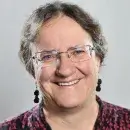
Tanya Atwater
Geophysicist and marine geologist Tanya Atwater - professor emerita at UC Santa Barbara - helped shape the modern understanding of the ground beneath our feet by helping to usher in the “Tectonic Revolution” in the 1960s. Her early work linked patterns of magnetism on the ocean floor to a new theory of seafloor spreading, quantitatively giving weight to a growing body of work that supported the idea that the surface of the Earth moves. Atwater’s research would go on to describe the various processes of a system of plates that comprised the Earth’s surface — “tectonic” plates whose movements explain a variety of phenomena including earthquakes and volcanoes, and the formations of mountains and basins. She is best known for her work on the plate tectonic history of western North America, in particular the San Andreas fault system, a roughly 1,200-mile zone that extends almost the entire length of California and Baja California, Mexico. In addition, she is devoted to science communication, teaching students at all levels, working with the media, museums, and teachers to bring earth information and excitement to all audiences.
Atwater was educated at MIT, UC Berkeley and Scripps Institute of Oceanography, earning her PhD in 1972. She was a professor at the MIT before joining the UCSB faculty. She directed the Educational Multi-media Visualization Center at UCSB, creating geological animations that are used extensively by teachers, museums and the media. Dr. Atwater has served on various national and international committees and panels and has been honored with the Geological Society of America Cordilleran Section’s Best Paper Award, a National Science Foundation Director’s Award for Distinguished Teaching Scholars, and Germany’s Leopold von Buch Medal for "outstanding career contributions in the geosciences."